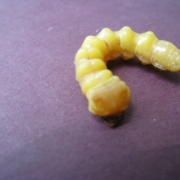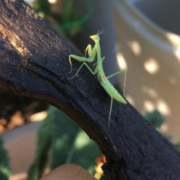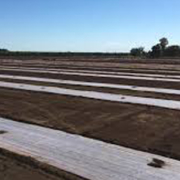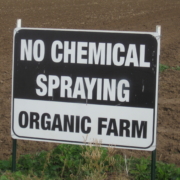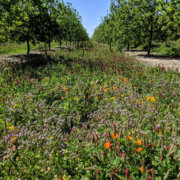Small is Beautiful: The Wonderful World of Invertebrates
 Print This Post
Print This Post
By Nina Prater, NCAT Agriculture Specialist
When I teach about the soil food web, I tend to paint with broad brushstrokes. This is probably because I only learned about the soil food web in terms of the big groups: bacteria, fungi, micro- and macroinvertebrates, vertebrates, and the plants that supply energy to the whole system. I think understanding the basics is enough to understand the why behind the five soil health principles, to understand how nutrients cycle, and to make management decisions to keep soil health growing year after year. But I attended a webinar in August that made me see the beauty of painting in the details, and it has inspired me to learn more.
Webinar Highlights
The Xerces Society for Invertebrate Conservation hosted this inspiring webinar. I was riveted throughout as their knowledgeable speakers filled in some gaps in my knowledge about soil invertebrates. I wanted to share a few takeaways and pass along some of their resources and ATTRA resources that can help everyone learn more about this topic.
Macropores in the soil are important for aeration, water infiltration, root growth, and more, and a lot of these macropores are created by soil critters. Earthworms are well-known tunnellers, but did you know that their casts have 50% more available nutrients than the soil around them? That means they are great nutrient cyclers too, making more nutrients available to plants. Ants are also excellent underground engineers, digging huge burrows that can go down to three meters deep! Ground-nesting bee burrows can be from a few centimeters deep up to a meter deep, and they are important native pollinators!
Dung beetles, star tunnellers themselves, were featured in this webinar, with Research Ecologist Ellen Welti presenting the work she has done in Montana studying this group of insects. She shared some amazing facts about them. Did you know there are over 9,500 different species of dung beetles in the world? And did you know they use the Milky Way to navigate? Another fun fact she shared made me appreciate them in a new light: did you know that dung beetles mate for life? The romantic in me really enjoyed learning that. I picture a pair of dung beetles rolling a ball of manure together, sharing hopes and dreams for their future offspring, or perhaps squabbling about where to bury their dung ball like Mr. and Mrs. Mallard looking for a good place to lay their eggs in the children’s classic, Make Way for Ducklings. (This gives me a great idea – a spinoff, Make Way for Dung Beetles!). Even if you’re not a romantic, there are still plenty of other reasons to love dung beetles: it’s estimated that they provide millions of dollars’ worth of nutrient retention and pest fly reduction per year. Pasture fertility, healthy livestock, reduced nutrient runoff, all thanks to dung beetles.
I also enjoyed learning about the different on-farm monitoring practices you can do to see how your insect population is doing. Pitfall traps, for example, are a very inexpensive way to see which types of insects you have, which can help determine how much diversity is within your agroecosystem.
Maybe the most important takeaway I got was that as farmers and ranchers, all our actions impact the insect populations, positively or negatively. And those impacts ripple upward and outward, as insects play such critical roles in our ecosystems: pollinating, decomposing, eating pest species or being eaten by birds, bats, mammals, and more. The world as we know it would not exist without invertebrates.
It is in everyone’s best interest to make sure we farmers and ranchers are doing our part to protect the little guys. One recent study estimates that 59% of species spend part of their lives in the soil. The lead author of that study, Dr. Mark Anthony, stated in an article in The Guardian, “Organisms in soil play an outweighed impact on the balance of our planet. Their biodiversity matters because soil life affects climate change feedbacks, global food security, and even human health.”
I know we can’t all drop everything and become entomologists, but I am going to try to pay a little more attention to the beautiful details of the world of invertebrates. Broad brushstrokes are perfectly fine to start, but I’m going to spend some time reading the Xerces Society’s excellent resource, Farming with Soil Life, and start learning more about the fascinating creatures that hum to life each spring and thrive whenever we give them a chance. I hope you will also get curious – check out the resources below to learn more about how you can support and protect these small but mighty members of our diverse agroecosystems.
Related ATTRA Resources:
Alternative Pollinators: Native Bees
Dung Beetle Benefits in the Pasture Ecosystem
Webinar: Ecosystem Services of Solar-Pollinator Habitats
Farmscaping to Enhance Biological Control
A Pictorial Guide to Hedgerow Plants for Beneficial Insects
Other Resources:
This blog is produced by the National Center for Appropriate Technology through the ATTRA Sustainable Agriculture program, under a cooperative agreement with USDA Rural Development. ATTRA.NCAT.ORG.


